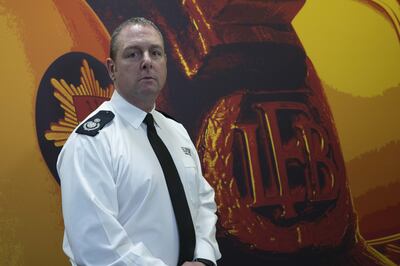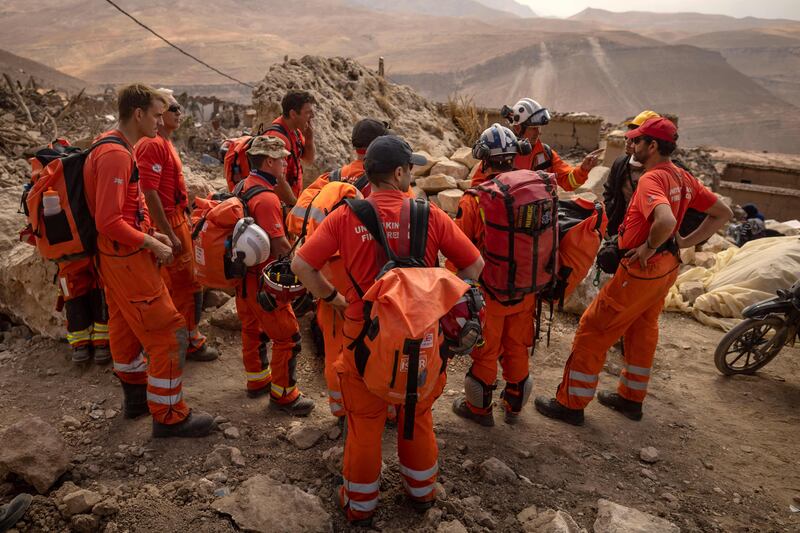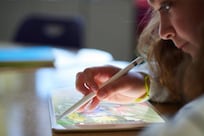Even before the rest of the world gets an inkling that a disaster has struck, David O’Neill and his team will have swung into action.
Mr O’Neill, a team leader with UK International Search and Rescue, says nowadays there is no need to wait for when an earthquake, volcanic eruption or flood makes the news for a well-rehearsed operation to begin.
Instead, a ping from the Global Disaster Alert Co-ordination System app is the bat signal that gets the ball rolling.
And within six hours, a highly experienced team can be waiting to board a plane bound for anywhere in the world.
UK Isar is formed from 14 fire and rescue services across the country, supplemented by volunteers including medics and engineers who are on call 24 hours a day, every day of the year.
Sixty of the 240-strong team are in Morocco helping with the rescue effort after the devastating earthquake, which has so far claimed the lives of more than 5,000 people.
The team is among several around the world who provide help to countries overwhelmed by the scale of devastation caused by natural disasters.
They are joined by humanitarian organisations helping to provide shelter, food and other basic necessities to local populations in the most desperate circumstances.
Mr O’Neill, 50, an assistant commissioner with the London Fire Brigade, led a team that worked in Turkey after the earthquake this year but is now helping to co-ordinate UK Isar’s work in Morocco.
He told The National what goes into getting a team in place and some of the thinking behind their work.
“Nowadays, because we’re in the digital age, we've got almost immediate access to alerting systems that tell us when a disaster strikes, whether it be an earthquake, flood, volcano, whatever, and find out even before it gets reported in the news,” he said.
Alerts are then sent out to crews from the team on the standby rota. They jump into a minibus to the airport, where they have a medical screening and their documents are checked.
Before they take off, the UK’s Foreign Commonwealth and Development Office, which funds UK Isar, begins to find local translators to help team members on arrival.
The team will only go to a country when the FCDO has secured permission and, as in the case of Morocco, often bilateral agreements exist that speed up that process.
Mr O’Neill said local people also stepped in to help. When he led a team in Nepal to assist after an earthquake there, he said, they used “English teachers as our main translators, and that worked really well”.
Meanwhile, the team's 14 tonnes of equipment is loaded on to to specially chartered aircraft or, in the case of Morocco, on to an RAF A-400 transport aircraft, sent as part of the relief effort.
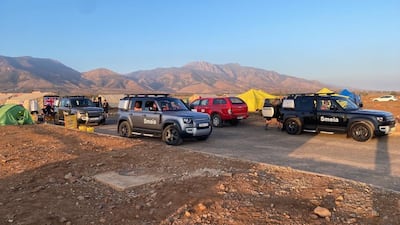
Members of the team carry everything they need to go about their business, from earth-moving equipment to listening devices. They also take all the food and water they need for two weeks.
For their latest mission, they have been helped with the donation of four Land Rover Defenders. When they hit the ground, UK Isar teams bring in dogs, whose noses can lead rescuers to a body in minutes.
On standby
Once they have completed a mission, they take stock of what happened to see what went well and how they can improve, which feeds into the international network of other rescue teams.
“The United Nations classifies search and rescue teams for urban search and rescue so international teams have demonstrated they operate to it the same standard,” Mr O'Neill said.
“We all kind of speak the same language, we use the same techniques.”
He said that despite the often harrowing circumstances in which international rescuers work, saving lives makes it all worthwhile.
“Turkey, for example, was our most successful rescue mission and earthquake in our 30-year history of the UK team, and we managed to save 11 lives,” Mr O'Neill said.
“That was very satisfying, as devastating as it was and how traumatic as it was dealing with the deceased.”
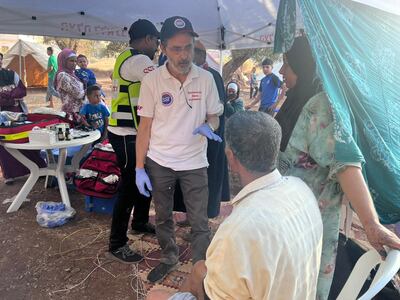
The global rescue community also has NGOs that work in disaster zones, including Sauveteurs sans Frontieres, which has performed missions around the world and is working in Morocco.
The Israel-based organisation was founded by Ariel Levy, who has 35 years of experience as a professional rescuer and first aid provider,
French-born Mr Levy, 55, founded SSF in 2000 with 12 rescuers to respond rapidly to terrorist attacks in Israel.
Today, the organisation has a team of 1,600 professional rescuers in Israel alone, with another 600 rescuers across 14 countries through SSF subsidiaries.
Mr Levy's first international rescue mission was in 2004 in Sri Lanka, where a deadly tsunami struck the coast.
The tsunami, caused by a 9.1-magnitude underwater earthquake, was one of the most devastating natural disasters in history, killing at least 225,000 people across a dozen countries including Indonesia, Sri Lanka, India and Thailand.
“We took the first flight to Sri Lanka and the scale of damage we saw was head-spinning,” Mr Levy said.
Children in the rubble
Since then, he has been to save lives in 14 countries, including Haiti, Mali, Turkey, Mexico, the Philippines, Ecuador, Jordan and Nepal.
Mr Levy's commitment to saving lives and helping others has been passed down to his children as well.
His four sons – Moche, 28, Elhanan, 24, Avraham, 22, Anmihai, 20 – and daughter Bat Hen, 26, are also first aid providers and medics who have been on rescue missions in Turkey, Nepal and Ukraine.
“This is my greatest pride, that I have inspired my children as well," Mr Levy said. "We have to do our best to make this world a better place for the next generation."
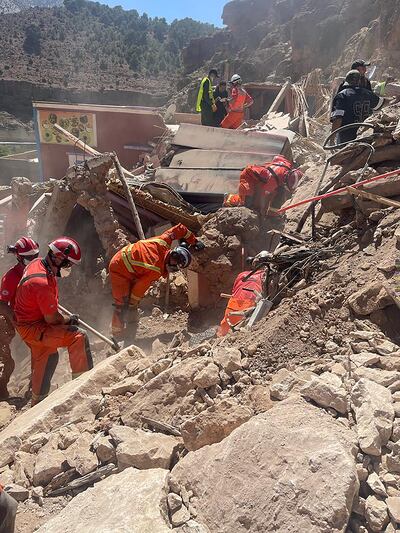
Last week in Morocco, he treated a 12-year-old girl who fainted when she found out her mother had died.
“There are so many heart-wrenching cases we see,” Mr Levy said.
But over the years, he has learnt to separate his emotions from his profession.
“I just got back from Morocco on Wednesday. Now, I try to disconnect from what I saw, heard and felt. Easier said than done as my team is still on the ground and I have to manage them from here.”
As the work of rescue turns to the grim task of finding bodies, there are also the needs of those who have survived and find themselves homeless and without food, often in extreme conditions.
UK charity ShelterBox provides tents, cooking utensils and mosquito nets to survivors of disasters.
The supplies are ready to be sent out from storage centres in the UAE, Belgium, Panama, the Philippines and Malaysia.
ShelterBox regularly monitors disasters and when an event has been identified, its logistics and procurement teams start working to see if a supply chain can be established to deliver aid, which is carried by ship.
Aid centres
The charity said it moves in when there are more than 20,000 people who have lost their homes, as it believes that below that number, the local community, government and other organisations will often be able to provide emergency shelter.
An emergency assessment team is in Morocco, speaking with local people, authorities and organisations to find out what support is needed after the earthquake.
The charity is using the experience gained from working with survivors of the earthquakes in Turkey and Syria.
“In these situations co-ordination hubs are set up, so we’ll be looking to base ourselves where the response is being co-ordinated,” said Dave Raybould, ShelterBox’s emergency response manager.
“Often that’s not in the most affected areas but in a nearby town or city.
“Sharing and gathering information with organisations and people on the ground will help us understand more about what is needed now and in the coming days, weeks and months.”
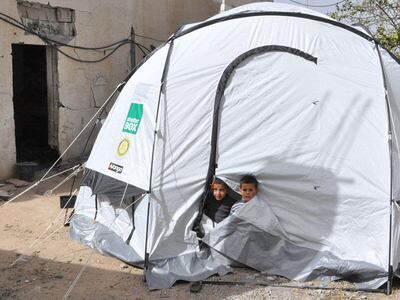
Care International's Deepmala Mahla said things “go crazy for 72" hours in the charity as it works to assess the needs of local communities hit by disasters.
“The most important thing for me as a humanitarian, and I've been doing this for more than two decades now, is that the response should be must be informed by local communities,” said Ms Mahla, the US charity's vice president for humanitarian affairs.
“The first responders are almost always the local community and women from the local community.”
Often the quickest way of providing help is by handing out cash rather than particular items such as blankets “because often the shop is open, products are there and the community can actually walk up to the shop”.
“Cash is a great way to help communities because it is fast, there's no logistics, no warehousing needed. Just give the woman $200, or whatever the amount is, and she knows what is best,” Ms Mahla said.
The charity lays great importance on the needs of women and girls as, for example, they might be caring for several others or might even be in labour.
Quick cash
When it comes to physical aid, Ms Mahla said that over the past 20 years, thinking has changed among international humanitarian organisations.
“Many years ago, there was a trend of shipping aid but locally led humanitarian aid is so much more efficient, culturally sensitive, culturally appropriate and, very importantly, helps the local market,” she said.
The use of local commodities and materials is also a key part of helping communities to get back on their feet. Ms Mahla gave the example of the March floods in Mozambique.
“So many people were in immediate need, needed shelter here, and there was so much bamboo available locally," she said.
"So we said to local people, 'Why don't you cut it in the right way and arrange it and give it to us, sell it to us?.
“So then it's a it's a small livelihood opportunity for them. They are earning money through selling that bamboo to us.”
But when the need is too great and the situation too difficult, that is when the charity ships out aid from warehouses, including one in Dubai's International Humanitarian City.
“So we when the requirement hits, we are already set to distribute,” she said.
Train local civilians?
For some, though, more rescue work could be done using locally trained civilians, who can act quickly during the time it takes for international teams to fly in.
Ismail Alabdullah, from the renowned Syrian rescue NGO the White Helmets, said this should be a priority for governments, especially with the unprecedented levels of climate-related disasters affecting the world.
“Their war is against time. Every minute counts,” Mr Alabdullah told The National.
“The first 72 hours are critical for rescue efforts. Beyond that, the chances of finding survivors, be it in earthquakes or other disasters, diminish significantly.
“While professional rescuers play a vital role, it is a necessity for governments to train civilians who are always the first responders.”
He said his organisation “were amateurs in 2013 when our country and people were in distress”, but now “we are a professional team of 3,000 individuals trained in various rescue techniques”.
“Our experience has evolved significantly, and we are even willing to extend our expertise to help people in Morocco and beyond,” Mr Alabdullah said.
Back in the earthquake-hit zones of Morocco, Mr O’Neill said international rescuers are continuing the work of finding survivors before they pack up and move on.
“They're still in the rescue phase and hopefully, even if they can save just one life, it will be worthwhile.”
